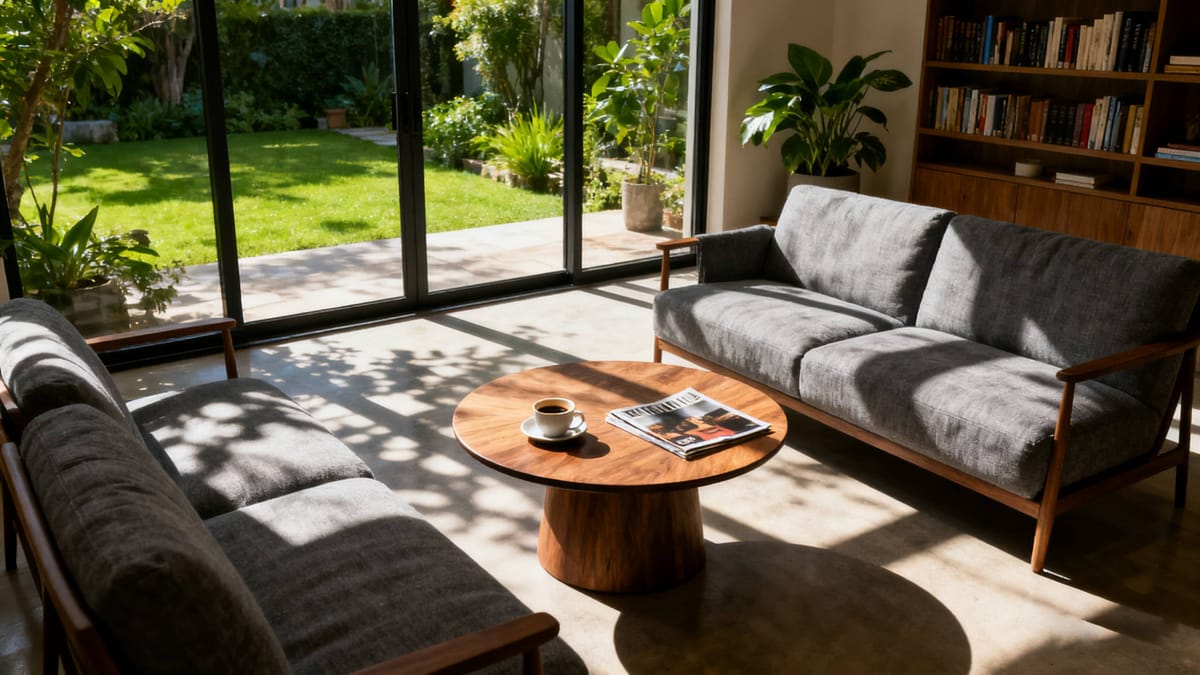Travelers today make their booking decisions with their eyes long before they step foot into a hotel. A beautiful lobby, a cozy room, or a sparkling swimming pool means little if it cannot be seen online. This is why hotel photography is no longer just about decoration—it is a marketing tool that has the power to inspire trust, create desire, and convert browsers into paying guests. A single image of a sunrise view from a balcony or a couple enjoying dinner by candlelight can spark emotion that drives action.
This article looks at how hotel photography attract guests, how to get ready for a photo shoot, creative ways to make your place stand out, and tips to make sure every photo strengthens your brand.
Why Hotel Photography Matters for Guest Attraction
High-quality hotel photos turn lookers into bookers. When people check out different places online, the pictures often help them choose. Studies show places with good, professional photos get more clicks and more bookings.
It’s not just about pretty pictures. Good photos make people trust what they see. They want to know the place will really look like the photos when they arrive. Professional shots show your hotel is clean, comfortable, and has its own style. They also show what makes your place special – whether it’s fancy, adventurous, relaxing, or great for families.
With so many options online these days, your photos are often the first thing that catches someone’s eye. They’re your best chance to make a good first impression.
Pre-Shoot Preparation & Planning
A successful hotel photoshoot begins before the camera is even picked up. Planning ensures consistency and prevents costly mistakes.
- Auditing your current photos: Go through your website, social media, and OTA listings and ask: What’s missing? Do we have photos of our new spa? Are the bedroom shots so old they don’t show the new linens? Are there no photos of the breakfast area, which guests often ask about? Jot down gaps—this becomes your “photo to-do list.”
- Define Your Goals: Decide what you want your photos to achieve. Do you need to emphasize luxury amenities, showcase a family-friendly atmosphere, or highlight unique architecture? The intention will shape the style and mood of the shoot.
- Choose the Right Photographer: Hiring a professional who understands hospitality photography can make a dramatic difference. Professionals know how to use light, angles, and staging to make spaces appear inviting.
- Prepare the Spaces: Rooms should be spotless, clutter-free, and staged to feel welcoming. Fresh flowers, neatly arranged pillows, and warm lighting can make an enormous impact. Outdoor areas should be groomed, and weather conditions considered.
- Plan the Timing: Natural light often produces the most flattering results. Scheduling shoots during sunrise or late afternoon can help capture warm tones and soft shadows. For restaurants or evening shots, artificial lighting setups may be required.
- Include People Where Appropriate: Showing staff members in action or guests enjoying facilities can add life to your images and help potential visitors imagine themselves at your property.
Thorough preparation ensures your hotel photography session captures not just the building, but the story you want to tell.
Creative Hotel Photography Ideas
Your photos should show guests what it’s really like to stay with you. Focus on the areas that matter most to them:
Guest Rooms: Show Comfort
Guests spend most of their time here, so make rooms feel like a home away from home.
- Start with the bed – fluff pillows, smooth sheets, check the headboard is straight. Stand in a room corner (not dead center) to show space. A wide-angle lens works well for larger rooms or suites, but avoid distortion. Keep key elements like beds or windows aligned so the room looks natural, not stretched. This shows guests exactly how much relaxing space they’ll have.
- Don’t skip the bathroom. Wipe the mirror, fold towels neatly, and open the shower curtain slightly to show it’s clean. Many guests check bathroom photos first – they want to see it’s not cramped or dirty.
- If you have different room types (suites, family rooms), highlight what makes each special. Place a stuffed animal on an extra bed in a family room. For a suite, capture the separate living area with a cozy chair and a view.
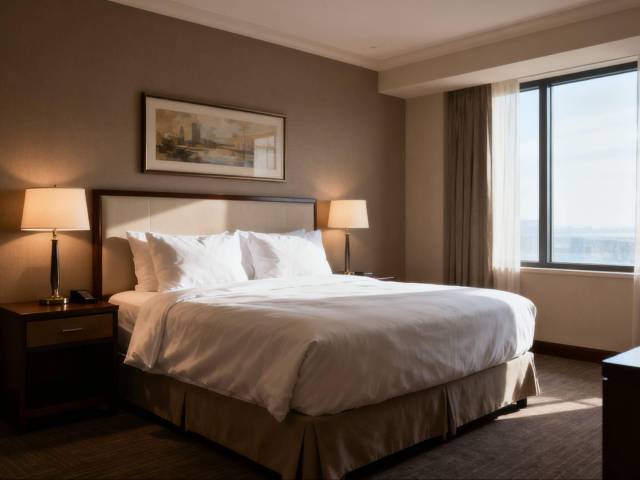
Shared Spaces: Capture Community
- Lobbies, dining areas, and amenities are where guests connect. Make these photos feel lively. Shoot the lobby during the day when natural light pours in.
- If you have a front desk, ask a staff member to smile naturally – no stiff poses. This shows friendliness.
- For the restaurant, take photos at breakfast time (fresh pastries on display) or dinner (soft lighting, a table set with candles). These small setups help guests picture themselves enjoying a meal there.
- Include functional spaces too. Business travelers notice gym photos – wipe down equipment first! For the pool, shoot in the late afternoon sun. Add a couple of floats to make it look inviting, not empty.
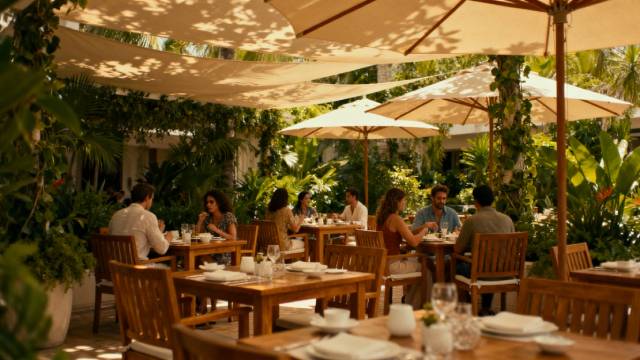
Experience Moments: Add Real Life
Guests want to feel the experience, not just see the space. Show the care behind your service.
- Capture staff preparing breakfast (arranging fruit, pouring coffee) or folding towels with extra attention.
- Highlight personal touches that make your hotel stand out – a handwritten note by the bed, a tiny vase of local flowers on a table, or a staff member helping a guest plan their day.
Other genuine moments work well. Snap a staff member helping with luggage at the entrance, someone reading in a lobby nook, or guests laughing on the patio. These “lived-in” shots make people think, “That could be me.” Keep it real – no awkward posing. If a guest agrees to be in a photo (always ask!), even better. It adds genuine charm.
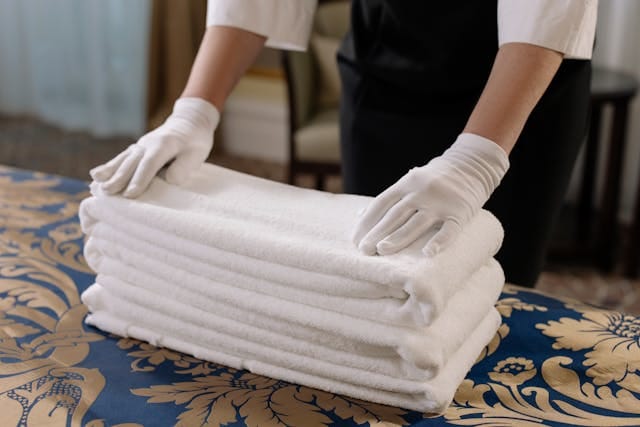
Surroundings: Connect to the Location
Your hotel is more than a place to sleep – it’s a gateway to the area. Use drone shots for a unique overhead view.
If you’re near nature – a lake, beach, or hills – show how your property fits in. Imagine seeing your pool beside a forest or your courtyard surrounded by local greenery. Urban hotels benefit too – drone shots can highlight parking, rooftop terraces, or how close you are to city landmarks like a park or downtown skyline.
Also photograph nearby spots guests might visit. Show the walkway to the beach, the café across the street, or the park for hiking. These photos tell guests, “Staying here means easy access to what you want to do.” In a city, shoot your hotel exterior at night with the skyline behind it. It feels exciting and memorable.
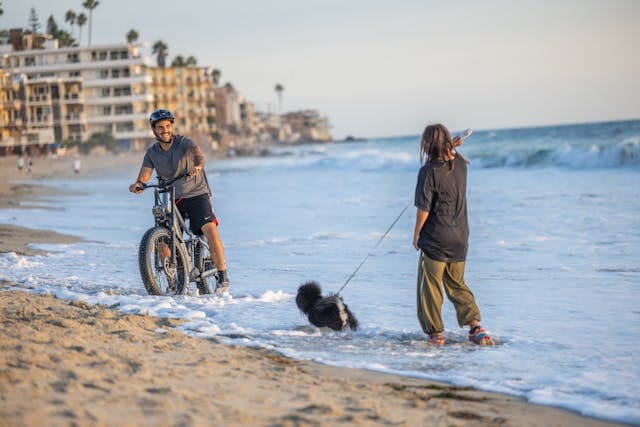
Essential Hotel Photography Tips
Strong hotel photography depends on both technical skill and artistic intention. To create images that convert visitors into guests, keep the following tips in mind:
- Leverage Natural Lighting: Natural light creates warmth and realism. Whenever possible, open curtains and allow sunlight to fill the room.
- Maintain Consistency: Use a consistent editing style across all images to strengthen brand identity. A uniform look across your website, social media, and booking platforms creates trust and professionalism.
- Focus on Details: Sometimes the smallest details—plush towels, artisanal soaps, elegant décor—can express quality better than wide shots. Don’t neglect these close-up moments.
- Highlight Different Areas: Guests want to see more than just the bedroom. Capture the lobby, hallways, meeting rooms, spa, gym, and outdoor spaces. Give them the full picture of your property.
- Invest in High Resolution: Blurry or pixelated images harm credibility. Always ensure photos are sharp, high resolution, and optimized for fast online loading.
- Tell a Story: Each photo should communicate an aspect of the guest journey, from arrival to relaxation to departure.
Common Mistakes to Avoid in Hotel Photography
- Over-editing or using filters that misrepresent the space
- Showing only a few select areas and ignoring facilities
- Failing to update photos regularly, leaving outdated décor or seasonal setups online
- Using poor lighting that creates shadows or dull colors
- Relying on stock photos instead of authentic images of your property
These mistakes can create disappointment and harm reviews, while authentic, well-executed images build trust and anticipation.
Conclusion
Good hotel photography isn’t just decoration—it tells your story and draws guests in. When done right, they evoke emotions that words can’t. Guests should look at your photos and think: “That’s me relaxing in that room,” or “I’d love to eat there,” or “Imagine that view from the balcony!”
Hiring a professional photographer, preparing your property carefully, and getting creative can transform how people perceive your hotel. Every photo you share can build trust and get people excited to book. Let’s be real: avoiding common mistakes and focusing on quality helps you book more rooms and keeps guests coming back. That’s how you turn pictures into profit.
